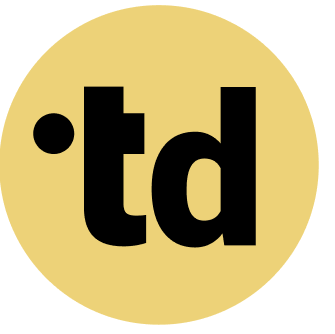Key Takeaways
Tracking time allocation across different roles is legally required in Germany and crucial for preventing burnout, which affects 22 percent of European employees.
Teams with clearly defined roles are significantly more efficient, reducing duplicated work and stress.
A hybrid human-AI approach to time tracking provides objective data, helping balance workloads and increasing employee satisfaction by up to 28 percent.
In today's distributed work landscape, understanding who does what is a massive challenge. A staggering 22 percent of European employees report burnout symptoms, often linked to overwhelming workloads and role ambiguity. Germany's mandatory time tracking laws highlight a legal need for clarity, requiring employers to record all working hours. This isn't just about compliance; it's about survival. Effective tracking of time allocation across different roles transforms overloaded teams into focused, high-impact units. It's time for a new playbook where humans and AI collaborate, turning chaos into a clear, productive rhythm. This is how *Sweet Teams Are Made of This*.
Practical Framework for Team Architects
As a Team Architect, you can apply these principles to your organization:
- Map Current State: Document existing roles and responsibilities using a tool like teamdecoder.
- Identify Gaps: Where are roles unclear? Where do humans and AI agents overlap?
- Define Clear Boundaries: Specify which tasks are handled by humans vs. AI agents.
- Create Accountability: Assign clear decision rights for each role.
- Iterate and Improve: Continuously refine based on team feedback.
Quantify the High Cost of Vague Role Definitions
Teams with poorly defined roles are up to less efficient. This ambiguity leads to duplicated work and missed deadlines, directly impacting your bottom line. In Germany, 71 percent of employees report high stress levels, a number exacerbated by unclear expectations. The problem isn't a lack of effort; it's a lack of a clear system for tracking time allocation across different roles.
This confusion creates a cycle of inefficiency where team members spend valuable energy just figuring out their responsibilities. Many leaders underestimate that this friction can consume up to a team's weekly hours. A recent survey found German employees feel their employers should provide more help in combating work stress. Without a clear view of time allocation, you cannot diagnose the root cause of this overload. You can improve your team's efficiency with better workload planning and allocation.
This lack of clarity not only hampers current projects but also makes future planning nearly impossible, setting the stage for a more strategic approach to workload management.
Achieve Full Transparency with hybrid team (humans and AI agents) Governance
Hybrid teams require a new level of intention, as feeling disconnected is a top challenge for remote workers. Integrating AI agents into your workflow provides the data needed for true transparency. AI-driven tools can increase employee satisfaction by up to some by matching tasks to individual skills and capacity. This approach turns time tracking from a chore into a strategic advantage, helping Many people see the bigger picture.
Here is how a hybrid human-AI model helps your team architects:
- It automates the collection of workload data, saving managers up to eight hours per week.
- It provides objective insights, removing the bias that affects many manual task assignments.
- It visualizes capacity in real-time, allowing for adjustments before burnout hits.
- It helps in dynamic resource allocation, ensuring agility.
This human-in-the-loop system ensures technology serves your people, not the other way around. You can try teamdecoder for free to see this in action. This data-driven clarity allows leaders to stop guessing and start architecting roles with precision.
Architect Roles for Clarity and Strategic Impact
Effective organizational development starts with well-defined roles. When employees have role clarity, their teams are some more effective. This clarity is the foundation for successful tracking of time allocation across different roles. It empowers team members by giving them ownership over their specific contributions to the company's goals.
Our Playful Tip: Use a structured approach to define each role. Here are four steps to guide you:
- Define Core Responsibilities: List the three to five primary outcomes each role is accountable for.
- Map Key Interactions: Identify which other roles it needs to collaborate with for success.
- Set Decision-Making Authority: Clarify what the role can decide independently versus what needs approval
- Link to Team Goals: Show how the role's success metrics contribute to the team's overall objectives of completion..
- A customer centricity template to ensure every role has a line of sight to the customer.
- A sustainability template that embeds green responsibilities into relevant roles.
- A DEI template to build inclusive accountability across the organization from the start.
Deep Dive: For modern leaders, this process is continuous. As your strategy evolves, so should your team structures. Regularly reviewing roles keeps your organization agile and responsive. This proactive approach to assigning FTEs per role prevents the slow creep of role ambiguity. With roles clearly defined, you can then measure and manage workloads effectively.
Leverage Data to Balance Workloads and Prevent Burnout
Data from time allocation reveals hidden workload imbalances that cause many managers to feel overwhelmed. With clear metrics, you can see which roles are consistently overloaded. This allows you to reallocate tasks based on real capacity, not guesswork. A study found that automated time-tracking systems can reduce payroll processing errors by up to 80 percent.
Teams that use data to manage workloads report a significant increase in overall well-being. This proactive approach is essential, as nearly one in five workers across Europe is affected by burnout. By visualizing how time is spent, you can initiate conversations about workload distribution before stress becomes a critical issue. This is key for measuring workload management effectively.
This balanced approach not only improves health but also unlocks a higher level of sustainable performance across the entire team.
Scale Your Team Structures from Day One
For startups and scaling companies, establishing clear roles and responsibilities early is critical. Founders who define roles from day one build a scalable foundation for growth. This ini This initial investment in organizational development prevents the chaos that plagues most rapidly growing small businesses. Clear role definitions make hiring more effective and shorten onboarding time by up to a significant portion.="">Our Playful Tip: Use templates to standardize role creation. Consider these for your core functions:
This structured approach to roles and responsibilities ensures that as you add people, you add clarity, not complexity. It allows you to focus on strategy operationalization instead of internal friction. See our transparent See our pricing to find a plan that scales with you. This clarity is the key to making your hybrid team thrive.
Make Bots and Humans Click for Effortless Flow
The final step is creating a seamless hybrid team where humans and AI agents work in concert. When AI handles the data crunching for time allocation, your team architects are free to focus on strategic human challenges. This int This integration can boost team productivity by over a significant portion.forms the workplace so that *Teams Just Wanna Have Fun* (and do great work).
This synergy helps you move beyond mere tracking to predicting resource needs. The goal is a state of flow, where every team member, human or bot, contributes to a shared purpose with minimal friction. This isn't just about better management; it's about creating a better way to work.
Try teamdecoder for free - shape your team and make change feel like play!
More Links
Statista presents statistics on cooperation and communication within management teams.
RKW Kompetenzzentrum discusses why startups fail due to team issues, not a lack of team.
DIW Berlin reports on the decline in average working hours in Germany, while the total volume of work reaches a record high.
Weizenbaum-Institut offers a publication likely discussing digital society and its challenges.
German Federal Ministries provide data on role models, likely in the context of career development or social issues.
SpringerProfessional identifies the biggest time wasters for managers.
Handelsblatt highlights the crucial success factor for good teamwork.
Fraunhofer IAO discusses the performance of distributed work models.
Bitkom deals with the topic of working time recording in companies.
FAQ
What are the first steps to implementing a time allocation system?
Start by defining clear roles and responsibilities for each team member. Then, choose a tool that is easy for your team to use and complies with legal standards like GDPR. Communicate the benefits clearly, focusing on transparency and workload balance rather than surveillance.
Is time tracking mandatory in Europe?
Yes, an EU ruling requires employers to have an 'objective, reliable, and accessible system' for recording daily work hours. Specific implementations vary by country, with nations like Germany enforcing laws that mandate the tracking of all working hours, not just overtime.
How can we track time without making employees feel micromanaged?
Focus on the outcomes of time tracking, such as ensuring fair workloads and preventing burnout. Use modern tools that automate much of the process and give employees access to their own data. Frame it as a tool for team clarity and support, not for monitoring.
Can time allocation data help with strategic planning?
Absolutely. The data provides insights into which projects and roles consume the most resources. This helps in more accurate future project planning, budgeting, and hiring decisions, ensuring your team structure aligns with your strategic goals.





